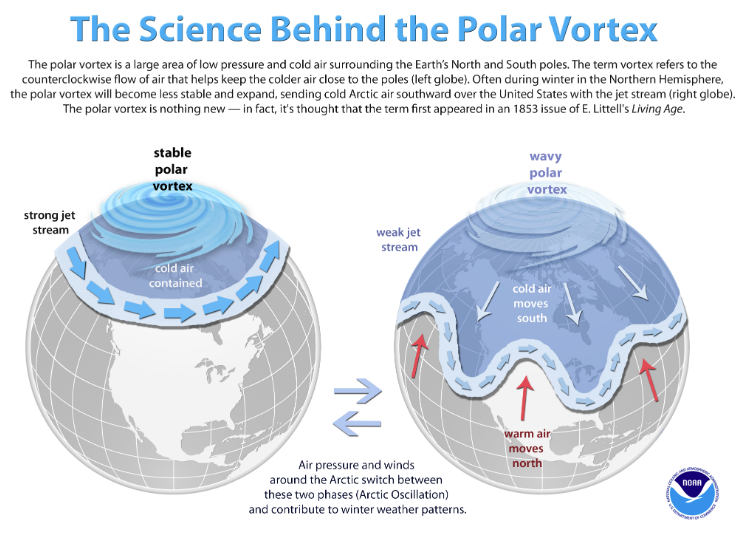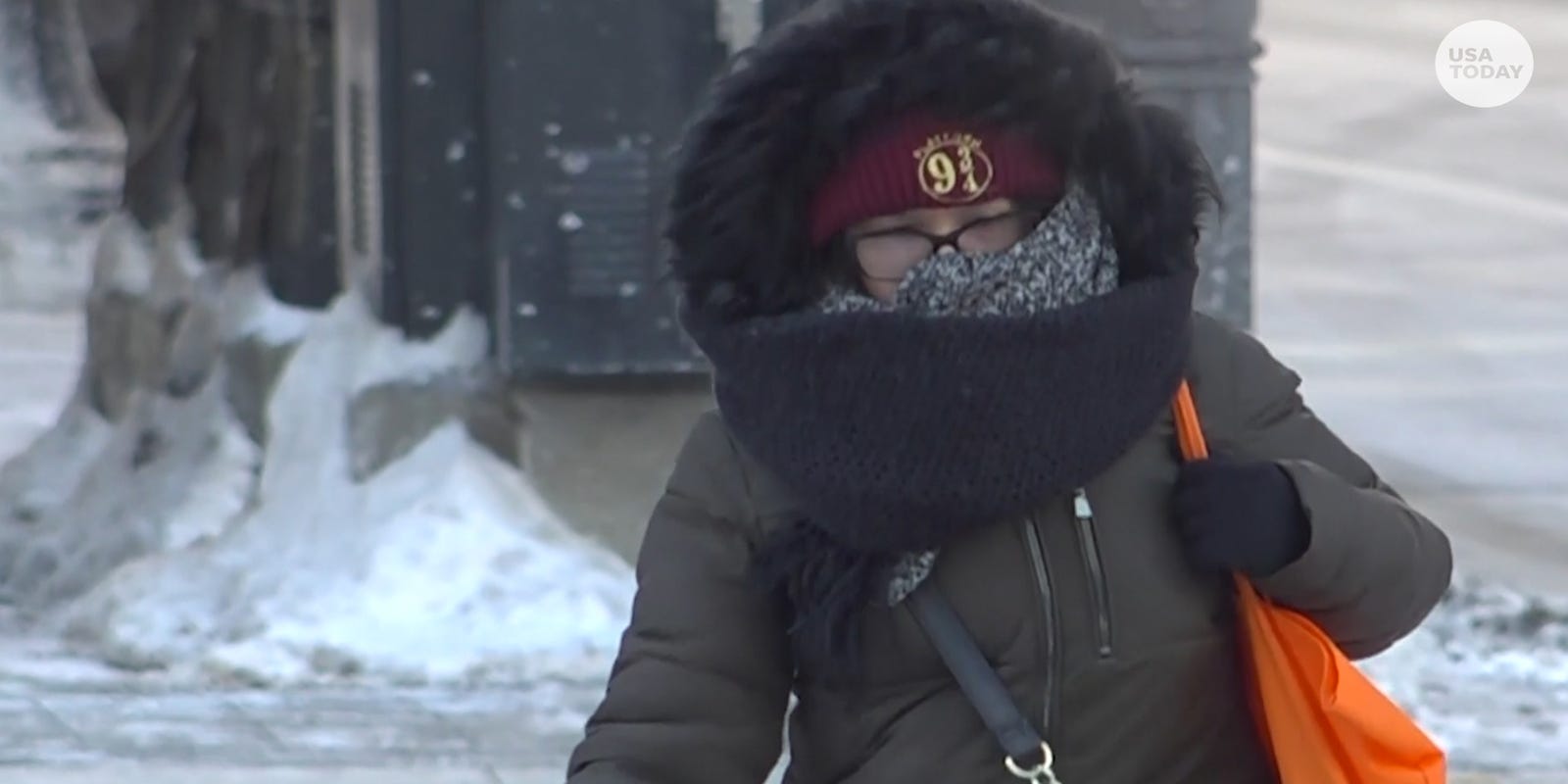
Prepare for a new edition of The polar vortex by finding your coat, gloves, scarves, hats, and boots cause the big one is coming.
According to NOAA's Climate.gov. This is a large area of low pressure and cold air surrounding the Earth's North and South poles. The term vortex refers to the counter-clockwise flow of air that helps keep the colder air close to the poles (left globe). Often during winter in the Northern Hemisphere, the polar vortex will become less stable and expand, sending cold Arctic air southward over the United States with the jet stream which is the right globe.
The polar vortex is here so try to stay warm. Be very afraid!
Just kidding! But, oh well, you're reading and now we’re all going to deal with together up and down polar vortex lane. Six years ago, “polar vortex” became the latest weather term to enter the public conversation; since then, it’s been blamed sometimes rightly, sometimes wrongly for every outbreak of wintry weather.
Today New York City has issued a Snow Alert beginning at 7 p.m. Based on current forecasts, we expect a huge snowfall beginning this evening and continuing into Tuesday morning. Total accumulations in the forecast of up to 22 inches are possible. New Yorkers are in for a winter wallop as NYC is expected to get hammered with its worst snowstorm in five years.
All winter weather information and information about the City’s response to the storm can be found by visiting the City’s Severe Weather website at www.nyc.gov/severeweather or by calling 311.
Operations Update
NYC is expecting significant snowfall. Salt spreaders will start pretreating roadways ahead of the snowfall. Additionally, the Department’s collection trucks have been turned into snowplows, ready to plow once two inches of snow has fallen.
Meanwhile, an ENSO expert is inviting some polar vortex fans to start with a quiz. When you read “The Polar Vortex is here!” you should:
- (a) Put on your long johns and immediately consume as many hot beverages as possible.
- (b) Lock the doors to protect yourself from a wintery tornado.
- (c) Check with your local forecast and prepare as you normally would for a forecast of cold (or warm) temperatures. Or, as we like to say, be weather-ready and climate-smart.
The answer is (c), but, hey, if you really want to pick the other two options, we’re not going to stop you.
